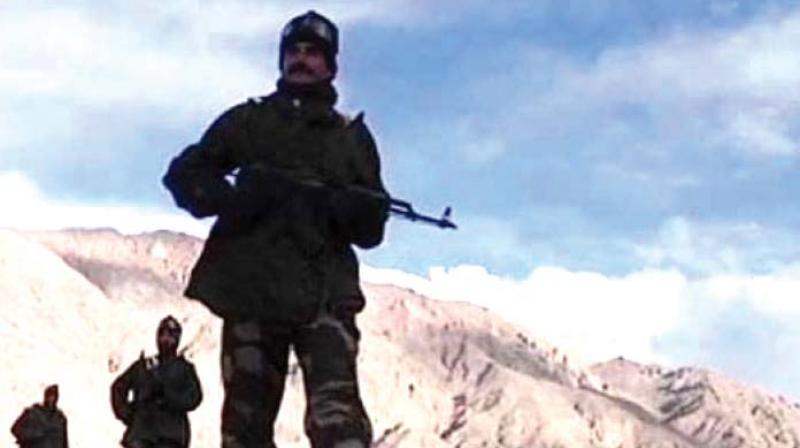Periscope: More Chinese intrusions likely, not a major war
The ongoing military standoff between China and India in Doklam has been going on since June second week.

The Chinese media on August 6 reported that China is “planning a small-scale military operation to evict Indian troops from Doklam” in about two weeks — pitting the untested People’s Liberation Army, which last saw action in February-March 1979 and got a bloody nose from Vietnam, against the combat-tested Indian Army (Kashmir LoC combat and counter-insurgency operations), which gave the PLA a bloody nose in September 1967 at Nathu La and in October 1967 at Cho La. The ongoing military standoff between China and India in Doklam has been going on since June second week. While numerous articles and comments have appeared in the media, with experts predicting war, I don’t think war between these two nuclear armed nations is likely at least till December, when the winter sets in. China is not ready for war. On February 1, 2016, China carried out a massive reorganisation of its military by replacing its existing seven regional military commands with five new joint theatre commands (eastern, southern, western, northern and central commands). This concept, based on the American model, puts all Army, Navy, Air Force, Rocket Force, Joint Logistics Force and Cyber Force units in a specific theatre under one military four-star commander for optimum synergy in wartime. As of now, these newly-formed theatre commands are still a “work in progress” and likely to take time till 2018-20.
On July 29, President Xi Jinping, who is chairman of the all-powerful Central Military Commission, witnessed a military exercise and on July 30 reviewed a massive military parade to mark the 90th anniversary of the PLA. Recent media reports indicate that China’s Northern Theatre Command has taken the warnings coming from Washington about the US taking some action against nuclear-armed North Korea for frequent ballastic missile tests very seriously. Media reports indicate that China has moved troops to the border with North Korea in order to seize some buffer North Korean territory, in case war breaks out in the Korean peninsula. In addition, China has moved nuclear decontamination teams to the North Korean border in case of any nuclear fallout due to American strikes on North Korean nuclear facilities. There is no doubt that the Chinese leadership is preoccupied with the escalating tensions in the Korean Peninsula and would not be prepared to open another military front elsewhere, specially when China would be hosting the ninth Brics summit from September 3-5 at Xiamen.
Also in October-November, 64-year-old President Xi would be seeking to consolidate his position as “core leader” (and trying to get another unprecedented 10-year term in 2023 when his present tenure expires) during the crucial 19th National Congress of the Communist Party of China meeting. It is obvious that any military debacle in the Korean Peninsula or a “unexpected bloody nose” given to the PLA by over 300,000 Indian mountain troops, supported by the Indian Air Force and a strong Indian Navy would be publicly embarrassing for President Xi, who would also be aware that apart from being a nuclear weapons state, India’s growing economy actually presents a huge market for China. On June 30, the US Senate proposed that US Navy ships be permitted to visit ports in Taiwan, and this move was welcomed by Taiwan. If this proposal beomes law then it would mean a reversal of US “one China policy” and likely to draw an angry escalation from China. In addition, China is also aware that before escalating its tensions with India, it needs to ensure “reunification” of Taiwan with mainland China, consolidate its hold over tension-filled South China Sea, where it has built military bases on artificially created islands and ignored the July 12, 2016 adverse ruling on Chinese territorial claims in South China Sea by the Hague-based Permanent Court of Arbitration.
China’s recent threat to go to war against Vietnam forced the latter to stop oil drilling in disputed South China Sea waters. China also has to cope with internal unrest in Xinjiang and Tibet, as also its self-created tensions in the disputed East China Sea, specially in the Japanese-occupied, Chinese claimed Senkaku islands, where its trawlers, Coast Guard ships and military aircraft frequently intrude into Japanese-claimed waters and airspace. If some day, Japan, South Korea and Vietnam become nuclear weapon states, then China is to blame. Despite the ongoing Doklam dispute, India has wisely suggested economic development for mutual benefit and China would have noticed that a Chinese firm recently won the bid to build a metro rail in Nagpur and another Chinese company was permitted to legally bid for the Ahmedabad metro rail. China would be also aware that notwithstanding India’s objection to OBOR, India is the only country in this region which can pay back for Chinese FDI in massive Indian projects like ports, bullet trains, etc. Our neighbours, too, are aware that Indian aid does not come with any hidden agenda for “grabbing territory”. While a large-scale military war in the Himalayas in 2017 is unlikely, India should be prepared for Chinese attempts to suddenly occupy some uninhabited areas or hilltops along the disputed 3,500- km Line of Actual Control (LAC), or a provocation like the July 25 2017 intrusion into Uttarakhand, and also to lure Bhutan into its fold, in the same manner that it has lured Sri Lanka into what is now being called “One Belt, One Road, One Debt”. Once the Himalayan snows melt in March-April 2018 the dragon may become bold and India should be prepared. Hopefully, Prime Minister Narendra Modi will now focus on making up ammunition-equipment-manpower-infrastructure shortages while also carrying out much-needed military reforms and reorganisation, and “tweak” the current NFU nuclear doctrine as diplomacy alone is unlikely to deter China.

